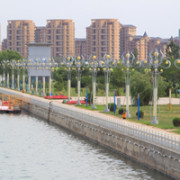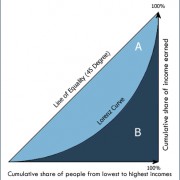
About Juzhong Zhuang
Juzhong Zhuang is deputy chief economist of ADB’s Economics and Research Department.Asia growth pessimism is not warranted

A gloomy outlook is enveloping the world’s economies. There are concerns too that countries are failing to sufficiently focus on long term policy responses to reverse the decline in global growth. Some argue that the global growth slowdown may be permanent, highlighting the danger of a period of chronically low growth, or what economists term “secular stagnation.”
Structural reforms to sustain Asia’s growth

Economic growth in both developing and advanced economies has slowed since the global financial crisis. Developing Asia’s growth also moderated after the crisis, to a large extent driven by the slowdown in the People’s Republic of China (PRC). The region’s economy expanded on average 7.6% annually during 2001–2010, but growth slowed to an annual average of 6.5% during 2011–2015. ADB is projecting further deceleration to 5.7% in each 2016 and 2017.
People’s Republic of China: The challenge of the middle-income transition

The Chinese economy grew by 7.4% in 2014 and is expected to expand by 7.0% this year. These are impressive growth rates for any country but lower than what has been achieved in the past. For 3 solid decades, since the beginning of market reforms in the late 1970s, the economy expanded by an annual average of almost 10%.
Confronting rising inequality in Asia

Developing Asia’s impressive growth continues, but faces a new challenge—inequality on the rise.1 Over the last few decades, the region has lifted people out of poverty at an unprecedented rate. But more recent experience contrasts with the “growth with equity” story that characterized the transformation of the newly industrialized economies in the 1960s and 1970s. In the 12 economies that account for more than four-fifths of the region’s population, income disparities expanded during the last two decades—despite the region’s world-beating performance in raising average incomes and reducing poverty.


Search
Subscribe / Connect to Asia Pathways
Subjects
- Agriculture and natural resources
- Blog
- Capacity development
- Climate change
- Economics
- Education
- Energy
- Environment
- Finance sector development
- Gender
- Governance and public sector management
- Health
- Industry and trade
- Information and Communications Technology
- Infrastructure
- Miscellaneous
- Population
- Poverty
- Private sector development
- Regional cooperation and integration
- Sanitation
- Social development and protection
- Transport
- Uncategorized
- Urban development
- Video Blog
- Water
Recent Posts
- Artificial intelligence: A new driver for inclusive growth and development?
- Increasing trust in cross-border e-commerce and artificial intelligence
- Enhancing access to maternal and newborn healthcare in developing Asia
- Can electric vehicles lead the way to a sustainable future?
- Mitigating climate-related sovereign risk to accelerate action on the climate emergency




Recent Comments